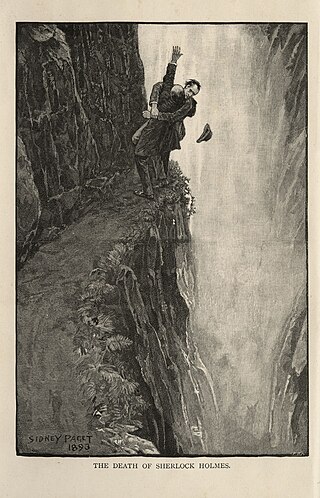
In chemistry, the adjective ferrous indicates a compound that contains iron(II), meaning iron in its +2 oxidation state, possibly as the divalent cation Fe2+. It is opposed to ferric, or iron(III), meaning iron in its +3 oxidation state, such as the trivalent cation Fe3+. This usage has been largely replaced by the IUPAC nomenclature, which calls for the oxidation state being indicated by Roman numerals in parentheses, such as iron(II) oxide for ferrous oxide (FeO), iron(III) oxide for ferric oxide (Fe2O3), and iron(II,III) oxide for the oxide Fe3O4 that contains both forms of iron.
Webster's Dictionary is any of the English language dictionaries edited in the early 19th century by Noah Webster (1758–1843), an American lexicographer, as well as numerous related or unrelated dictionaries that have adopted the Webster's name in his honor. "Webster's" has since become a genericized trademark in the United States for English dictionaries, and is widely used in dictionary titles.

A cushion is a soft bag of some ornamental material, usually stuffed with wool, hair, feathers, polyester staple fiber, non-woven material, cotton, or even paper torn into fragments. It may be used for sitting or kneeling upon, or to soften the hardness or angularity of a chair or couch. Decorative cushions often have a patterned cover material, and are used as decoration for furniture.

Merriam-Webster, Incorporated is an American company that publishes reference books and is mostly known for its dictionaries. It is the oldest dictionary publisher in the United States.

A countermeasure is a measure or action taken to counter or offset another one. As a general concept, it implies precision and is any technological or tactical solution or system designed to prevent an undesirable outcome in the process. The first known use of the term was in 1923.

Molding or moulding is the process of manufacturing by shaping liquid or pliable raw material using a rigid frame called a mold or matrix. This itself may have been made using a pattern or model of the final object.

Mincing is a food preparation technique in which food ingredients are finely divided into uniform pieces. Minced food is in smaller pieces than diced or chopped foods, and is often prepared with a chef's knife or food processor, or in the case of meat by a specialised meat grinder.

Bedding, also called bedclothes or bed linen, is the materials laid above the mattress of a bed for hygiene, warmth, protection of the mattress, and decorative effect. Bedding is the removable and washable portion of a human sleeping environment. Multiple sets of bedding for each bed are often washed in rotation and/or changed seasonally to improve sleep comfort at varying room temperatures. Most standardized measurements for bedding are rectangular, but there are also some square-shaped sizes, which allows the user to put on bedding without having to consider its lengthwise orientation.
The following outline is provided as an overview of and topical guide to human–computer interaction:

Random House Webster's Unabridged Dictionary is a large American dictionary, first published in 1966 as The Random House Dictionary of the English Language: The Unabridged Edition. Edited by Editor-in-chief Jess Stein, it contained 315,000 entries in 2256 pages, as well as 2400 illustrations. The CD-ROM version in 1994 also included 120,000 spoken pronunciations.

In literature, an archenemy or archnemesis is the main enemy of someone. In fiction, it is a character who is the protagonist's, commonly a hero's, most prominent and most-known enemy.
A pensioner is a person who receives a pension, most commonly because of retirement from the workforce. This is a term typically used in the United Kingdom, Ireland and Australia where someone of pensionable age may also be referred to as an 'old age pensioner'. In the United States, the term retiree is more common, and in New Zealand, the term superannuitant is commonly used. In many countries, increasing life expectancy has led to an expansion of the numbers of pensioners, and they are a growing political force.

A shag is a heavy long piled worsted textile. In the 17th century, the term was also used to refer to inferior silk material.

An electronic dictionary is a dictionary whose data exists in digital form and can be accessed through a number of different media. Electronic dictionaries can be found in several forms, including software installed on tablet or desktop computers, mobile apps, web applications, and as a built-in function of E-readers. They may be free or require payment.
Bathtub gin refers to any style of homemade spirit made in amateur conditions. The term first appeared in 1920, in the prohibition-era United States, in reference to the poor-quality alcohol that was being made.

Hello is a salutation or greeting in the English language. It is first attested in writing from 1826.

Material is a substance or mixture of substances that constitutes an object. Materials can be pure or impure, living or non-living matter. Materials can be classified on the basis of their physical and chemical properties, or on their geological origin or biological function. Materials science is the study of materials, their properties and their applications.
In the lineal kinship system used in the English-speaking world, a niece or nephew is a child of an individual's sibling or sibling-in-law. A niece is female and a nephew is male, and they would call their parents' siblings aunt or uncle. The gender-neutral term nibling has been used in place of the common terms, especially in specialist literature.

Merriam-Webster's Words of the Year are words of the year lists published annually by the American dictionary-publishing company Merriam-Webster, Inc. The lists feature ten words from the English language. These word lists started in 2003 and have been published at the end of each year.












